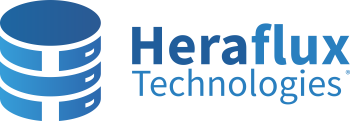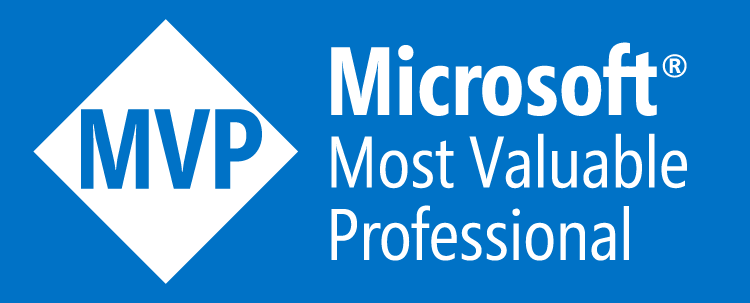VMware vSphere 5.1 Features DBAs Should Care About
As you know, the world’s premier virtualization platform, VMware’s vSphere 5.1, was released to the public this past week. This evolutionary release contains a number of great new features and improvements. As database professionals, which of these features directly (or indirectly) apply to you? Which features should you emphasize to your administrators to speed up their adoption or upgrade cycles so you can take advantage of these features? I’ll tell you!
vRAM
First and foremost, that miserable abomination that was the vRAM tax has been abolished. This is retroactive for vSphere 5.0 as well. Even though this limitation only affected a very small subset of organizations that I have encountered, it made everyone upset.
However, the free hypervisor, ESXi 5.1, has a limit of 32GB of memory. The server will not boot if more is installed. This sounds bad, but honestly, most folks that I know that run the free version of ESXi are not using more than 32GB of RAM per server anyways. It’s a great option to get started with virtualization, and are great for branch offices or other simple installations. If 32GB is not enough for your situation, consider upgrading to the vSphere Essentials Plus suite. It contains licenses for vCenter and more memory.
Core Features
The vSphere suite has gone through another evolution of core features. The hypervisor engine can now utilize host servers with up to 256 physical cores (up from 160). You can create VMs with 64 vCPUs and 1TB of RAM (up from 32 vCPUs). For you DBAs, this helps you get to 99.5% virtualization (up from a dramatic 99% before – aww yeah!). vSphere 5.1 now also has a per-VM setting for latency. That should help grant priority to your latency-sensitive database servers. The jury is still out on this one, but I hope to be able to test this and have a report soon!
Next, vSphere 5.1 now supports up to a five-way Microsoft Failover Cluster! Previously, only two nodes were supported. You must be running Windows Server 2008R2 or higher.  A link to the setup documentation for this improvement is located here.
Storage
Have you ever had a storage administrator that would never tell you the disk configuration on the storage underneath your business-critical SQL Servers? They always just say “It’s good enough; don’t worry about it†whenever you press them for details. vSphere 5.1 has a new feature called the I/O Injector that will monitor correlated latencies of different datastores. It can inject bursts of artificial disk activity to detect which datastores are sharing the same disk group. That is incredible! This is one of the biggest features that I am the most excited about. A strong percentage of the larger environments I work with have storage administrators that will not adequately educate their DBAs as to the disk configuration. This is one major step in helping the DBAs get the information needed to better perform their jobs. I simply cannot wait to experiment with this feature and report back on how well it works in practice.
Storage vMotion is now a core feature of vSphere 5.1 Standard Edition! That’s fantastic news! Storage vMotion allows you to migrate data between datastores (for example, LUNs on a same SAN, or LUNs on different SANs) while the virtual machine is in use – with no noticeable impact to the VM. You can now use this to move your database objects (independently located on their own virtual machines) between SAN LUNs. Storage DRS can even suggest virtual disk movement and placement if datastore workloads get imbalanced. To me, for those shops not fortunate enough to be running Enterprise Plus, this feature is fantastic!
Live virtual machine migration can now also take place without shared storage, AND this can happen on licensing levels all the way down to Essentials Plus. During this migration, a vMotion and a Storage vMotion are combined and VMs can now move between hosts with no common shared storage. Has Storage vMotion been extended down to this licensing level? Not explicitly, but once I get this running in the lab, we’ll find out if you can perform Storage vMotions without migrating VMs between hosts at this licensing level.
You can now also reclaim unused space from a virtual disk ***. Thin-provisioned disks (i.e. your operating system volume) can reclaim the space taken when files are deleted from the file system. It helps to keep the footprint small.
** Why the asterisk?
You can’t use this feature.
This feature is available only for VMware View at this time. C’mon VMware – get this feature into the next release for general consumption! Please?
A new feature within Storage I/O Control has an adjusting default latency value. In vSphere 5.0, this latency for alerting was 20ms. With newer SANs supporting auto-tiered SSDs, 20ms is simply too high. In vSphere 5.1, this feature now self-adjusts itself and will help you determine when latencies are dramatically abnormal, even when the disk subsystem is on SSD.
Lastly, vSphere 5.1 now has support for 16Gb fibre channel HBAs. For those of you with crazy-fast workloads, get ready to upgrade!
Security
For those of you that are subject to some flavor of compliance regulations, vSphere now has better security auditing throughout the new vCenter Single Sign On (SSO) service. The environment is now better audited, so rest easy. System processes that ran under a generic system process now are executed under a user’s account, so you now have a complete picture of who changed something on your servers and when they did it.
Next is the vShield Endpoint product. Who out there excludes your database objects from your antivirus scanner? You should. Who turns off the real-time antivirus agent? People do, but you shouldn’t. Who refuses to install an antivirus scanner on your database servers? I don’t. vShield Endpoint is now included in the core suite. It is an agentless antivirus and security server that can monitor for viruses and other bad things in your VMs. I have not used this product before, but will run some test cases soon to ensure that it does not have any negative repercussions on your high-volume SQL Servers. If any customizations or changes are necessary, I’ll of course report them here.
Management
One big change is now that the vSphere Web Client is now the preferred method for management your VMware environment. It is now fully-featured, and because it is web-based, is now cross-platform compatible. It still requires that the Flash plugin be loaded into the browser, so this continues to exclude management from iPads. VMware, are you going to make a fully-featured vSphere client for the iPad anytime soon?
vSphere 5.1 now also has the ability to present more performance statistics to the guest VMs. This means great news for DBAs, as more host-level and VM-level statistics are always welcome. I speak frequently about the need to grant your DBAs access to vCenter performance statistics, and hopefully this feature will help the situation.
Networking
Most DBAs do not care much or interact with some parts of the infrastructure on a day-to-day basis. I’d put networking at the top of that list. I continue to stand by my conviction that every technologist should have a basic understanding of each major aspect of all components underneath their database servers, and networking is no exception.
My single biggest complaint about the Virtual Distributed Switch (VDS) was the somewhat frail nature of the management network. If the datacenter went offline (planned or unplanned), fringe cases could cause the VMware host to lose the VDS configuration. If the host could not communicate with the network because of the missing VDS, and the network was required to re-deploy the VDS profile to that host, you have a chicken-and-egg situation. The host would fail to communicate with the network. The administrator would have to scramble and set up a standard switch with a management port group, and this was rarely planned for. I caused this twice in my home lab by accident, and I have seen it happen in production at various clients over the last year. This host is completely offline until it is fixed.
They fixed it in vSphere 5.1. The host now retains the VDS configuration even if vCenter is offline. Yay! No more issue! I can now change my recommendations to move the host networking completely to the VDS instead of keeping a management port group on a traditional Standard Switch.
I know this does not directly affect you DBAs out there, but indirectly this new feature keeps you from unplanned delays in firing up your VMs if something bad happens.
This same VDS can now perform a network health check too. Check back soon for a longer writeup and test results of this feature.
The last VMware networking feature that your DBA should know about is the VXLAN. It is now part of VMware’s Software-Driven Data Center model. You can now create a new isolated network within a VLAN. Have you ever had an argument with the networking team about needing new VLANs for things like development, test, or backup recovery networks? Now, this can be performed through software rather than at the switch level, and can be done in mere minutes. Cool, eh?
Conclusion
The vSphere suite continues to evolve with the release of the vSphere 5.1 suite. Check back soon for more in-depth testing of these features, and for more ways to use these to the fullest to keep your SQL Servers running at their absolute best!



